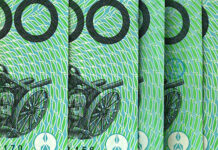Japan’s inflation rate is finally starting to tick up. It’s expected that the country will report a further increase in inflation in November to 3.9% from 3.7% prior. But, before that information is made available, the BOJ is expected to meet to decide its monetary policy stance.
Normally this would be an issue for a central bank, having to make a rate decision without the latest inflation figures. But the long-standing consensus is that the BOJ won’t change policy, at all, and keep its now decades-long extreme easing policy. So, if the interest rate isn’t going to be a surprise, what could move the markets? Well, that’s preparing for what’s coming next year.
A change in leadership
Kuroda, known as an ultradove, will step down at the end of his term in April. The consensus is that since rates have been negative for the entirety of his mandate, it’s unlikely he will change the situation just as he’s about to go out the door. But, that doesn’t mean he won’t help set things up for whomever replaces him. And that could start coming out as soon as the next meeting.
For a long time, it’s been rumored that the most likely replacement for Kuroda would be Hiroshi Nakaso. He’s a former Finance Ministry official, and is seen as a lot more hawkish than the current governor. In the past, he’s already issued proposals on how the BOJ could exit its extraordinary easing policy.
A change in outlook
Nakaso has proposed a slow shift in policy, with small steps to bring inflation down. That could be something of a challenge, since many other central banks have raised dramatically to head off skyrocketing inflation. Japan has managed to avoid that situation, so far, but inflation is near double the target rate and keeps rising. Which has been increasing pressure on the BOJ to do something.
One of the ways that the BOJ could relieve that pressure is to let it be known that it is considering some of the “soft” measures to lift rates, but not actually do any changes. Given how long the BOJ has been stuck in one policy, it could be enough to “re-anchor” inflation expectations.
What about the weaker yen?
One of the things that was driving inflation was the weakening yen earlier in the year. It got so bad that the Japanese government had to step in a couple of times. But since expectations that the Fed was about to level off in its rates started to cement in the mind of the markets, the yen has recovered a little. This has given the BOJ – and particularly Kuroda – more room to keep rates low at least for a while.
But, if the trend with the currency could reverse, that could cause complications for the BOJ. One of the ways to deal with that would be to suggest the BOJ was looking at easing off on yield curve control. That’s a policy that would be expected to be enacted if Nakaso were to become governor. But, whether the BOJ judges it an opportune moment to let that slip now or safe that card to play in the new year, is still an open question. That could be the determinant of whether the yen continues to drift in it’s current direction, or starts to recover against the dollar on expectation of the new policy.












